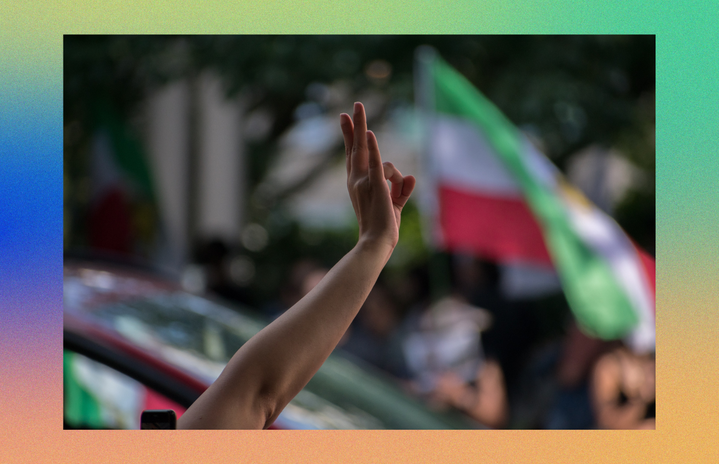Around early November of this past year while studying abroad, I took a weekend trip to Amsterdam with a few of my friends. While walking just past the royal palace, we noticed a very intense protest ongoing in an open area and sat on the steps of the palace to observe. This protest was what would open my eyes to the current circumstances that women are facing in Iran today. This global response was sparked by 22 year old Mahsa Amini’s death in the hands of Iranian authorities who had arrested her on September 16th 2022 under allegations of dressing “improperly” (in reference to Mahsa’s hijab). Following this tragedy, Iranian women have been sacrificing their lives to stand up to decades of harm, oppression, and abuse.
The goal of the Iranian women is simple, yet shrouded in a complex religious history. During these protests since Mahsa’s brutal and unprecedented assasination, women have been pouring into streets, taking off and burning their hijabs while chanting phrases such as, “Women, life, freedom.” As an American woman who can access all three of these privileges, it is heartbreaking to see such intense and life-threatening fights for these things that I so rarely fully appreciate. It was very eye-opening to learn that the severity of this reaction has never been seen before among Iranian women. Protests against hijabs in the past have been sparse, however, dealt with very serious consequences, making the current situation in Iran significantly historic. As protests and responses have been increasing since the events in September, over 300 Iranians have lost their lives to this fight, many of them being women and children.
Outside of facing dictatorial and deadly circumstances around religious expectations, Iranian women have also been facing serious threats to their education. In recent events this year, Iranian women have been facing poisionings in classrooms through toxic gasses, in an attempt to keep girls from going to school. BBC reports that this ongoing event first occurred in late November, and has impacted at least 10 more girls’ schools. While no fatalities have resulted from these targeted attacks, more than 200 girls have fallen ill, and at least 18 have been hospitalized. It is suspected that these harmful attacks are to be taken as “payback” to young Iranian girls from their active and vocal participation in the unrest following Mahsa Amni’s death in September. Government officials have been slow to take any action in protection of their female citizens, and academic leaders in many schools have admitted to a slow investigation process due to survaillence camerasallegedly being out of service for multiple weeks.
Beginning to understand the life-threatening conditions that Iranian women are living through has absolutely shifted the way that I view my own access to freedom and education as a woman. Even in the United States today, discrimination against women can be felt, yet on a much lesser level to the women of Iran. In the end, oppression and discrimination on any level to any group of women is a threat to all women. I am hopeful that the global coverage and conversation regarding the women of Iran will continue, and that individuals who are fortunate enough to never experience this level of fear and loss of freedom will continue to listen with purpose to these brave women.


